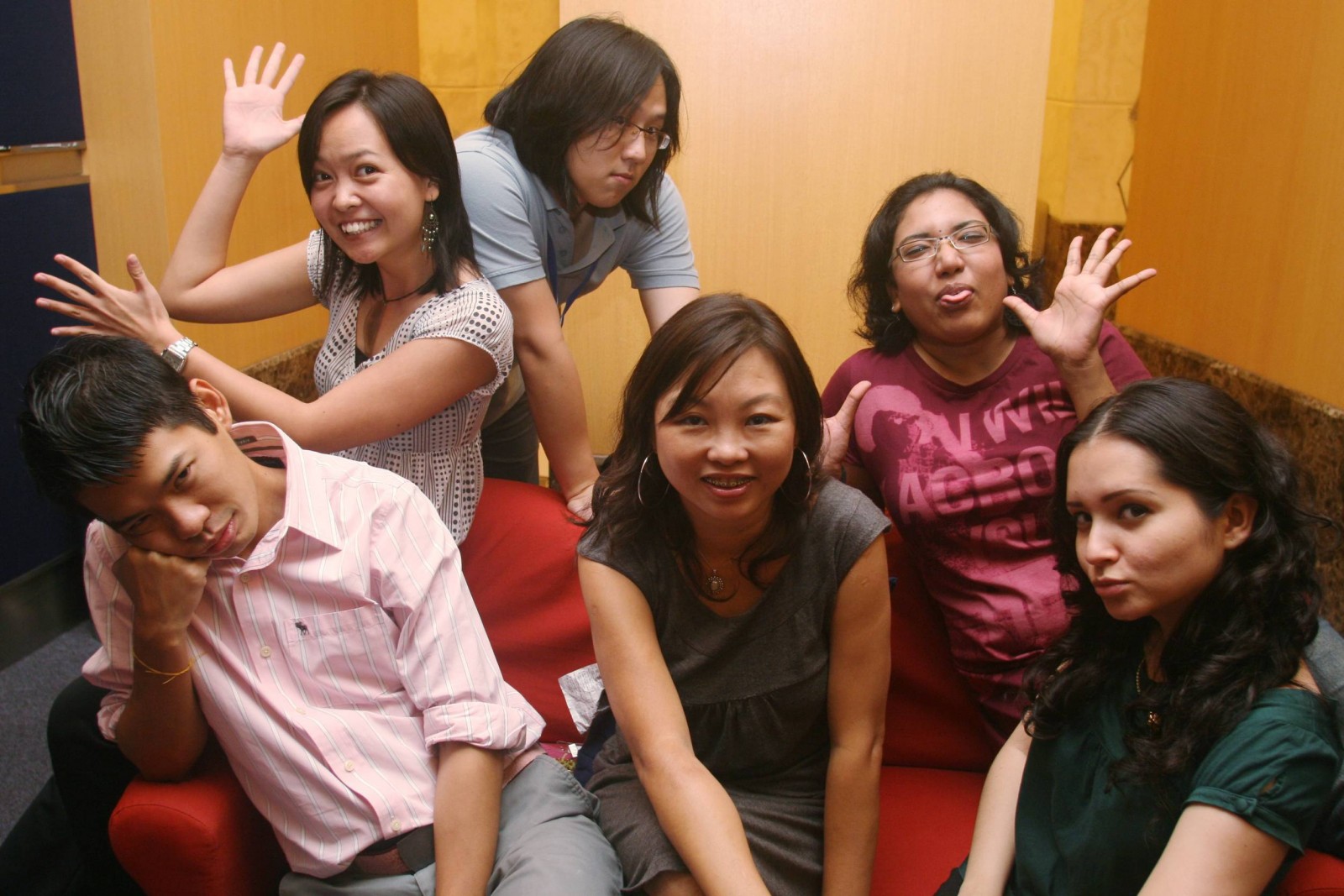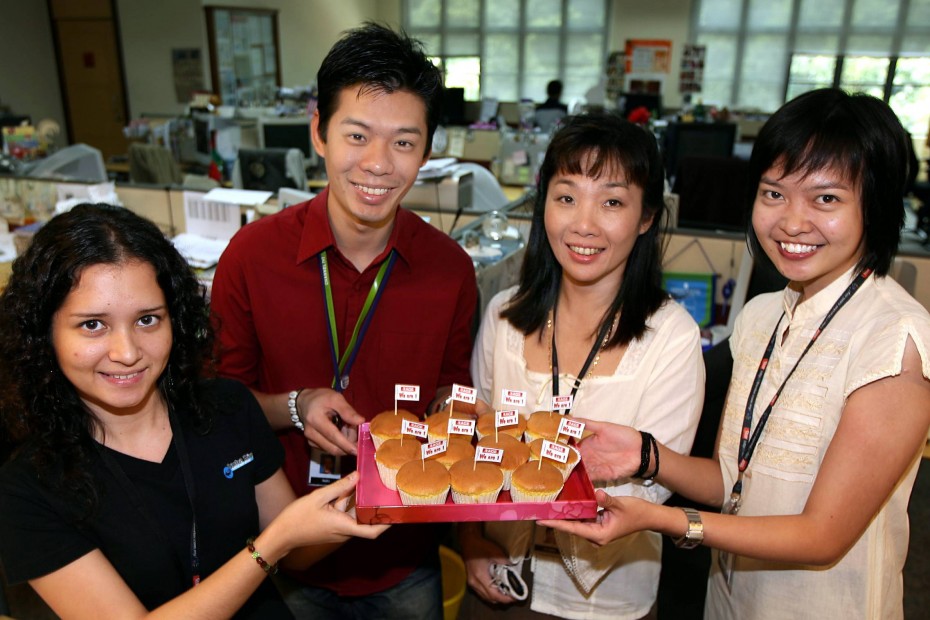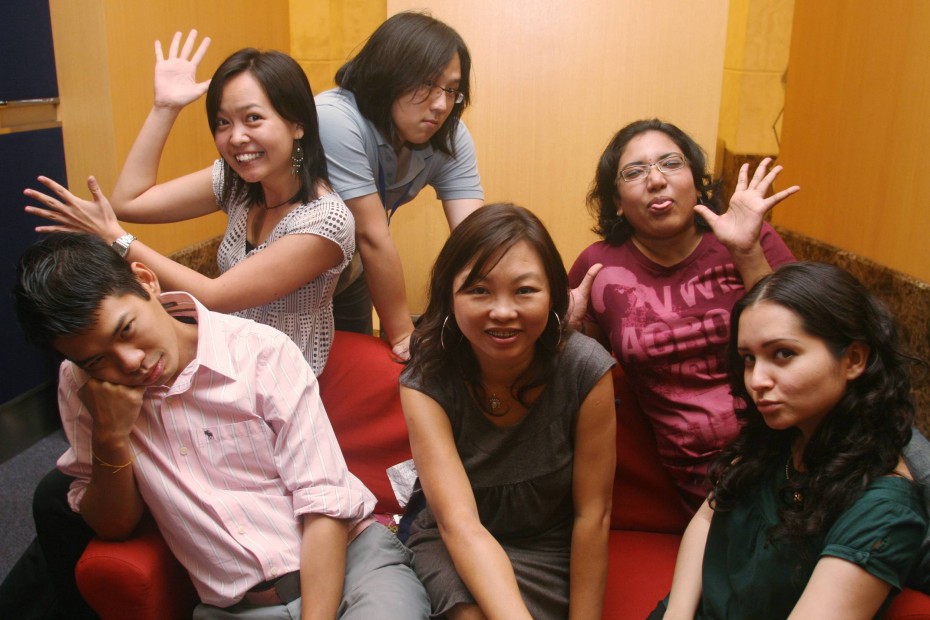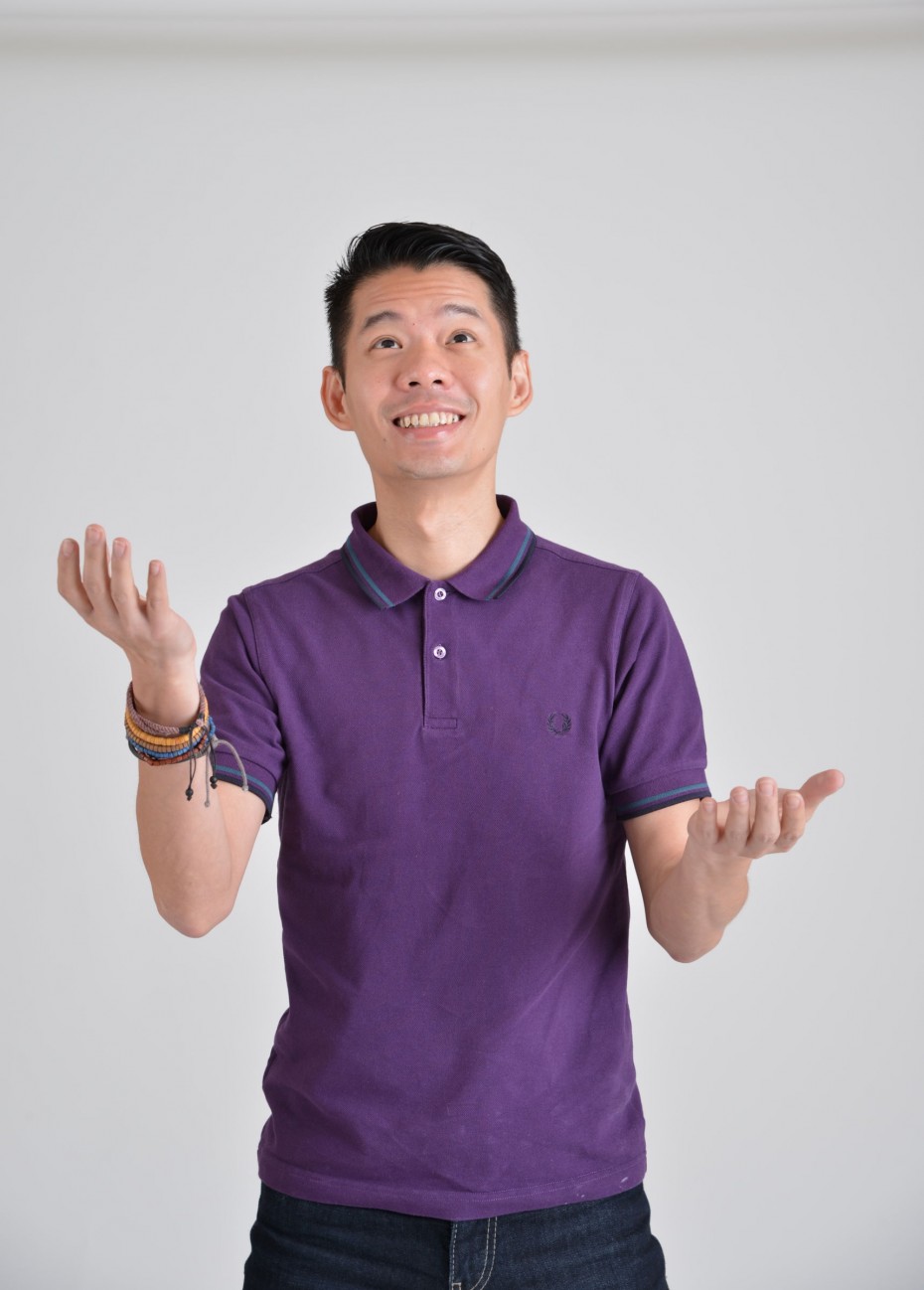In line with R.AGE’s 10th birthday, we got three of our former editors to tell us what they learnt — and continue to learn — from their time at R.AGE.
TAN JU-ENG
R.AGE editor, 2005-2007, and founder of the BRATs young journalist programme
Moving on from BRATs, R.AGE was a natural progression. We wanted to move from preparing them for college to preparing them for work life.
We thought it was all about getting the right college and scholarship or making the right career choice. After a few surveys and workshops where we interacted with this restless lot, I was pleasantly surprised to see how hungry they were to soak up experiences once we got them onto the right platform, out of the classroom.
Hence the way forward to construct R.AGE was to create experiences whether in games or with internships to give them that edge to take on challenges that will be presented in their lives and careers. R.AGE was created to reflect everything “our age” – we respected that and took the lead from them. Happy Birthday R.AGE! Live long and prosper.
IVY SOON
R.AGE editor, 2007-2012
I probably got hooked on my smartphone the day I signed up for Twitter back in 2009, and I totally blame R.AGE for my screen addiction. But it was all part of the excitement of discovering social media, and experimenting with it as a tool for reporting stories and engaging with our young audience.
At that time, the R.AGE team had been producing a 12-page daily pullout for college students as well as a weekly youth section in Star2, and running a website.
But even in the midst of meeting tight deadlines, we knew that it couldn’t be business as usual in R.AGE because we were addressing a youth audience, a demographic that was consuming media differently from the rest of The Star readership. We needed to reach and engage with them differently.
Luckily for us, social media came into being and we were able to ride that wave from the beginning.
It was most exciting being at R.AGE then because we were early adopters of social media, something we were able to do because The Star’s management gave us the leeway to experiment with new platforms.
The R.AGE team began to adopt a new approach to journalism – it was not only about reporting stories, but also engaging directly with our audience and including them in the news-making process.
We were live tweeting from events, and engaging directly with our once faceless and nameless readers via Twitter and Facebook as early as six years ago.
We also worked hard at encouraging R.AGE readers to get on Twitter and Facebook because those were platforms where they could be heard.
R.AGE’s role was to facilitate discussions on issues that matter to the young, and to get their voices heard.
For instance, we did a cover story on young people in abusive relationships, which was followed up with a Tweet chat session where readers could talk directly to then Women Aid Organisation president Ivy Josiah.
Following tweets from young people vigorously expressing themselves was one of the highlights of my years at R.AGE. I started working with young people on The Star’s BRATs young journalist programme 20 years ago, and R.AGE was a continuation of The Star’s commitment to giving youths a voice. We are fortunate that technology has made engaging with young people so much easier and accessible, and I count myself especially lucky to be at R.AGE to leverage on those game-changing new tools and platforms.
But of course R.AGE would not have been able to embark on that exciting journey if it were not for the commitment and hard work of the team – then assistant editor Niki Cheong (who zealously prodded us onto social media) sub-editor Melody L. Goh, and reporters Sharmila Nair, Nasa Maria Entaban and Ian Yee.
They were the first mobile multimedia journalists working across different platforms, years before everyone else joined in. R.AGE’s innovative approach was recognised by the World Association of Newspapers and News Publishers who awarded us the World Young Reader Prize in the Editorial category in 2012.
And it was all the more fun because we were able to do all that by including and interacting with our young readers.
NIKI CHEONG
R.AGE assistant editor and editor, 2005-2011
We had an idea and a team but we didn’t have a name. It had already been a few weeks of decision-making on editorial direction, of designers crafting the look and feel, and of sorting out how to launch this new concept for The Star.
Then one of our colleagues, Daryl Goh, mentioned the band Rage Against The Machine and I distinctly remember a pause, which quickly turned into a heated discussion.
Some felt “rage” was too aggressive and angsty; others like myself felt it was exactly because of that connotation – which summed up the transition from sweet sixteen to adulthood – that the name was perfect.
I was just a media consultant then, before I joined The Star full-time as Assistant Editor, hired to bring to life this idea of having a special pullout dedicated to young Malaysians.
The eventual decision was a compromise, made possible thanks to a clever design decision. Our young readers now had a choice of how they wanted to interpret the name: All the rage, Our Age (R – Age) or just simply, Rage.
It has been 10 years and the logo hasn’t changed much. The only change was the addition of the website URL late in December 2005 when we introduced the first of many online elements – a simple blog. The blog evolved into a website, then a youth portal, and then a repository of R.AGE’s digital assets.
Each of these were introduced with fanfare, and to be honest, they were my favourite moments at the “desk”, as we call it. Each launch provided us an opportunity to head out and meet young Malaysians across the country, and the great response was always an affirmation that we had a finger firmly on the pulse of Malaysian youth.
Among my most vivid memories were the campus roadshows in Sept 2005, bringing a host of celebrities to various universities across the country; or the party we hosted at “Youth Deck” in Menara Star to launch the blog, or the first attempt at live tweeting David Archuleta’s surprise appearance at a school when Twitter was barely a buzzword.
We knew that print and online weren’t the only ways to engage the youth, so we also hosted a range of on-ground activities across the country like the My2Sen Challenge, Trailblazer and Spirit of KL/Malacca/Penang. Of course, I came full circle running the BRATs young journalist programme, having been part of it back in 1995.
But it wasn’t just the fun stuff that meant something to me. R.AGE gave us a platform to tackle issues affecting young people that weren’t so commonly discussed back then – from child abuse to the urban poor, online bullying to HIV/AIDS issues, which won us several local and international awards.
My memories of R.AGE encompass both the professional, as I have described above, and the personal. It was the longest ever job I’ve held, made easier by what remains the best team of people I have had the pleasure of working with.
I can only speak for the six years that I was at the desk before I left as editor to pursue a Master’s degree in Digital Culture and Society in 2011. In fact, it was my experience at R.AGE that led me down that path – I wanted to understand more academically the work we had done to transition from a print publication to a digital hub.
My only hope is that R.AGE left as much of a mark on its young readers as it did on me personally. It’s been four years and I’m still so proud to have once been able to call R.AGE my baby. Now, it’s all grown up. Congratulations, and here’s to many more years.










Tell us what you think!